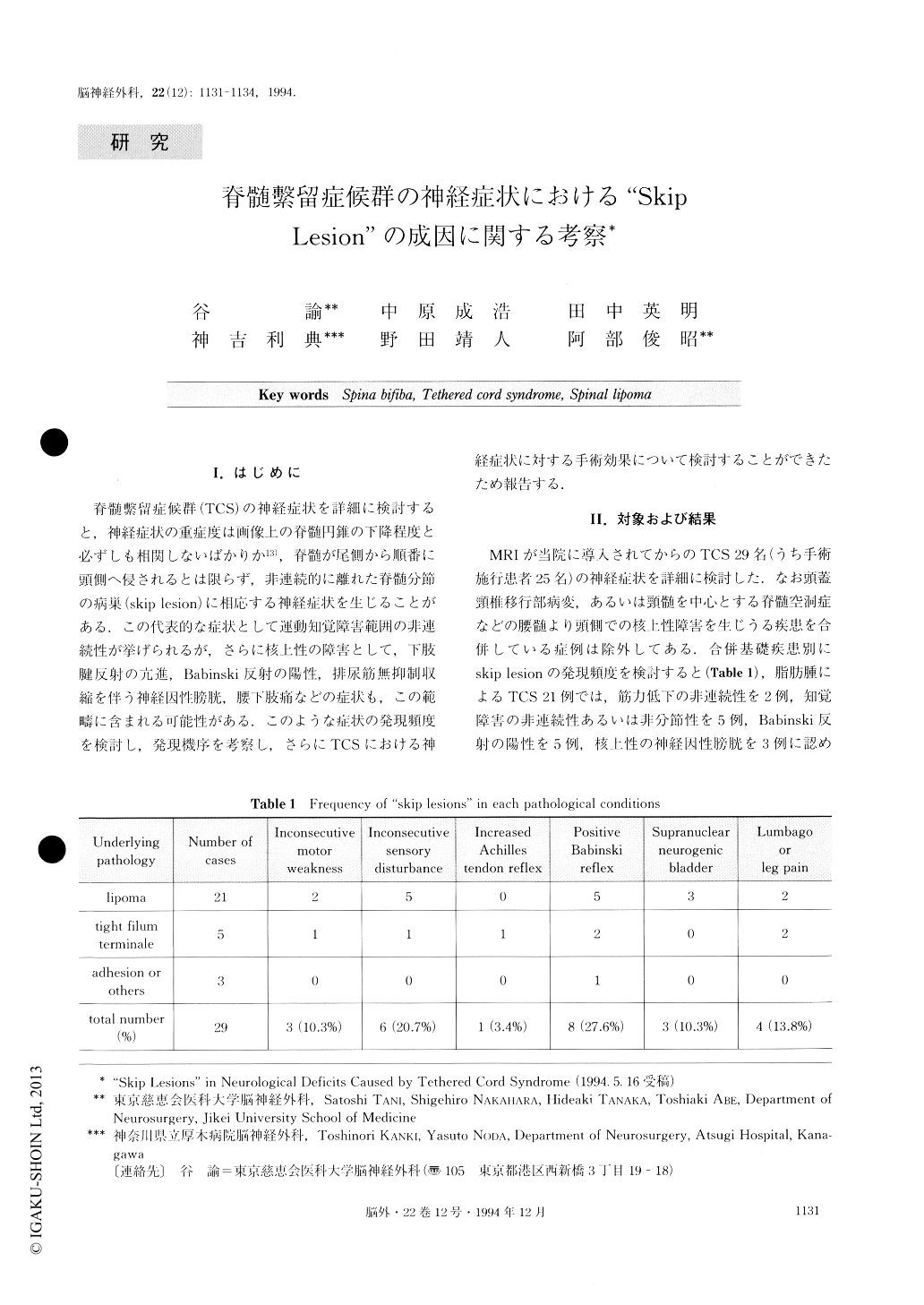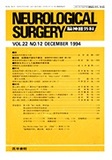Japanese
English
- 有料閲覧
- Abstract 文献概要
- 1ページ目 Look Inside
I.はじめに
脊髄繋留症候群(TCS)の神経症状を詳細に検討すると,神経症状の重症度は画像上の脊髄円錐の下降程度と必ずしも相関しないばかりか13),脊髄が尾側から順番に頭側へ侵されるとは限らず,非連続的に離れた脊髄分節の病巣(skip lesion)に相応する神経症状を生じることがある.この代表的な症状として運動知覚障害範囲の非連続性が挙げられるが,さらに核上性の障害として,下肢腱反射の亢進,Babinski反射の陽性,排尿筋無抑制収縮を伴う神経因性膀胱,腰下肢痛などの症状も,この範疇に含まれる可能性がある.このような症状の発現頻度を検討し,発現機序を考察し,さらにTCSにおける神経症状に対する手術効果について検討することができたため報告する.
The neurological deficits caused by tethered cord syndrome do not necessarily follow a dermatomal pat-tern of the affected spinal cord from caudal to cephalic fashion. The authors defined these neurological deficits as “skip lesions”, and reviewed the neurological deficits in tethered cord syndrome. Among 29 cases, inconsecu-tive segmental motor weakness in 3 cases, inconsecu-tive segmental sensory impairment in 6 cases, positive Babinski reflex in 8 cases, supranuclear neurogenic bladder in 3 cases and lumbago or leg pain in 4 cases were observed and they were thought to be compatible with the neurological deficits called “skip lesions”. The basic mechanism of this sign is that the cephalic por-tion of the spinal cord is functionally impaired during flexion of the lumbosacral spine, while the caudal spin-al cord with decreased visco-elasticity dose not elon-gate. Inconsecutive motor-sensory disturbance, acceler-ated deep tendon reflexes in the lower extremities, posi-tive Babinski or other pathological reflexes in the lower extremities, uninhibited neurogenic bladder, lumbago and pain in the legs were considered to belong to the category of “skip lesions” and they can be treated by the untethering procedure. The authors concluded that preoperative careful insight into the mechanism of “skip lesions” revealed surgical efficacy for the reversi-ble neurological deficits by the untethering procedure, or the efficacy of decompression of the lipoma or neurolysis around the involved spinal nerve roots.

Copyright © 1994, Igaku-Shoin Ltd. All rights reserved.


